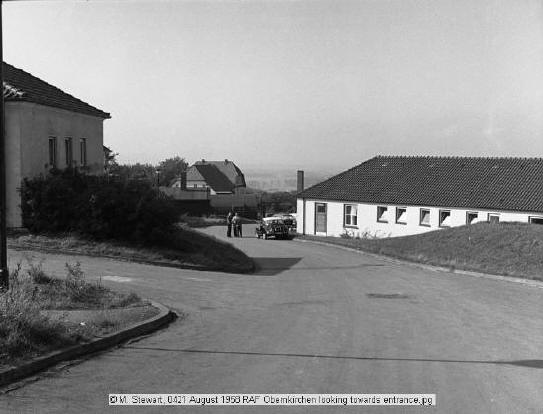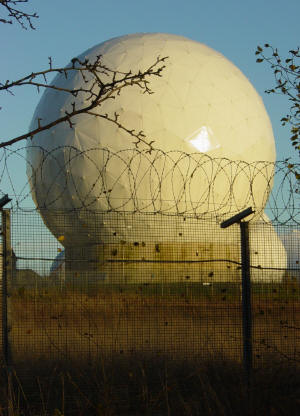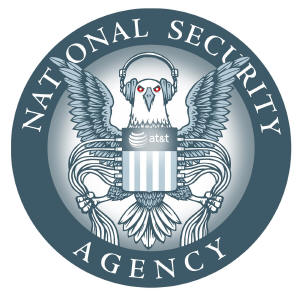|
Cold War Warriors Wing Commander Eric Ackermann, GM., R.A.F.
A hero in the shadows … A Cold War ELINT pioneer.
Peter Jackson
Oxford, England
 The first part of Eric Ackermann’s life story concluded at the end of the Second World War in which he served with great distinction, gaining six campaign medals and the George Medal for gallantry. His war service, important though it was to the nation’s
war effort, proved to be just a preamble to the next fifteen years during which his contribution was arguably more important though less exciting. The first part of Eric Ackermann’s life story concluded at the end of the Second World War in which he served with great distinction, gaining six campaign medals and the George Medal for gallantry. His war service, important though it was to the nation’s
war effort, proved to be just a preamble to the next fifteen years during which his contribution was arguably more important though less exciting.
Unlike most, servicemen and women, Eric showed no interest in becoming a civilian again –perhaps he relished the prospect of life in Germany in the early years of the so-called peace. Why go back to war damaged and impoverished Britain when he could do something to thwart the intentions of another enemy bent on replacing Nazi Germany? He had already
accomplished much during his four and a half years of war service when life had been exciting and sometimes perilous. He learnt much about electronics in wartime and was eager to apply his new skills to the next challenge, which was not long in coming.
This new enemy was the Soviet Union which quickly made its intentions clear to be as uncooperative as it possibly could be. There were, of course, justifiable reasons for the Soviets to be wary of the west. From the time when the western allies were gracelessly permitted in July 1945 to occupy their pre-determined sectors in Berlin and the final
adjustments were made to the borders in their zones in west Germany – entirely to the advantage of the Soviets - it was obvious that there was trouble ahead. The western part of Germany, comprised two-thirds of the country.
The Soviets had engineered the Yalta Conference of February 1945 to ensure that their zone had the largest, single proportion – one third. The other three powers: the United States, the United Kingdom, and belatedly and grudgingly, France, shared the rest. So the west was on one side of what Winston Churchill, in his speech in Fulton, Missouri, in
1946, called the Iron Curtain. The Soviet Union and its satellites were on the other. The two groups were facing each other across a fortified border. The Soviets were intent on fostering their own very different, political and economic system. They made it clear they intended to destroy their enemy. Churchill’s vision of "broad sunlit uplands , as he put it in his 1940
speech at the time of the Battle of Britain, was fading fast.
It took a while, but within two or three years Eric Ackermann was starting to experiment with ways of intercepting Soviet Air Force signals. Keeping his eyes and ears open to what the enemy was about to do, or was already doing had been crucial during the war and the activities of Britain’s code-breaking Centre at Bletchley Park is said to have
shortened the war by at least a year. If continuing work along the same lines could actually prevent a war, what a wonderful thing that would be. Unfortunately Bletchley Park was closed in 1945 and for a short time the U.K. took its eye off the ball. Some people were prepared to trust Stalin, others felt that perhaps Communism had something to offer after a terrible war
against the Fascist Germany and Italy and, besides…. the Soviets had suffered a terrible mauling and unimaginable losses both in terms of manpower and resources. Surely, as they had made, by far, the larger contribution to victory – and they never stopped reminding the west about it. The allies owed them something in return, and if we acknowledged this fact, then a war
between the two political blocs would never happen.
We now know that these views were misplaced. Stalin could not be trusted and from 1945 until 1948 was already taking over the countries to the east of Germany as his cordon sanitaire, defending the homeland against the wicked imperialists. Not, of course, that the unlucky inhabitants of these countries gave him permission to do so. They just had to put
up with being forcibly incorporated into the Socialist Paradise - a treat they were to enjoy for more than forty years. This grouping of hostile countries was a threat to the west and countering this through the use of electronics means became Eric Ackerman’s occupation until the end of his life in 2003.
In February 1946, however, after beginning his experimental work on signals interception, he was interrupted by a curious mission which had nothing to do with his real work. Put simply, he was to move a valuable civilian scientific research establishment from Ried am Innkreis in the American Zone of Austria to the British Zone of Germany. This was not
easy in winter on damaged roads, and with valuable equipment and people on board. He was the Convoy Commander and once again proved his mettle and probably enjoyed his last adventure out on his own before reverting to the more static life of a station commander. He duly reached Ried safely, secured the Fraunhofer Institute of Ionospheric Research, its Director and staff of
200, and escorted it and them to the town of Lindau near Göttingen in the shadow of the Harz Mountains.
Following the move, he received a surprise invitation from the C-in-C’s office. He viewed this invitation with some trepidation, even fearing that his Air Force career might be over. Because he had appropriated seventy trucks for the mission, that the C-in-C may have needed for other purposes. He went to the C-in-C’s office as commanded. An Aide came
in during the meeting expecting Eric to be recoiling from his chief’s wrath. To his surprise he found him relaxing on the sofa enjoying one of Sir Sholto’s cigars.

After his last mission off the leash, as it was, he returned to Obernkirchen to resume his scientific research which had become urgent. The western allies had now accepted the need to re-introduce wartime methods of finding out what the new enemy was doing to undermine the west’s security. The Soviet Union, the awkward one amongst the quartet of
occupying powers in Germany, was obstructing every move the west tried to make. War seemed imminent and Eric’s specialty - signals interception, was to be his most important contribution to the post-war security of his country and beyond.
He had spent 1945 avidly collecting German and Italian radars, signals and other electronic equipment abandoned at the end of the war and this horde became his working tools in his research, when put in charge of the newly formed Air Scientific Research Unit (A.S.R.U.) In 1950, this led to the establishment of the first, R.A.F. ground-based intercept
station in Germany. By the mid-1950s there were five additional ground-based sites - including No. 646 Signals Unit that was directly under Eric’s command at Obernkirchen. No. 646 S.U. deployed detachments to Berlin, Putlos on the Baltic, Habbaniya in Iraq and Akrotiri in Cyprus as well as one in Austria which was under four-power occupation until 1955.
With promotion to Squadron Leader (Major) in 1949 and Wing Commander (Lieutenant Colonel) in 1954, his rank was now reflecting his increasing responsibilities, though he still had just an honorary commission. Between 1945 and 1960 he developed his expertise with signals interception which kept him in Germany until 1959. At this time, he experimented
with the early production of SIGINT- a combination of ELINT and COMINT (Communications Intelligence).
Alongside his demanding professional duties, Eric‘s domestic life was by now relatively placid after the hectic war years and the challenge of the Fraunhofer expedition. He and his first wife Dorothy had divorced and in 1948 he married Gizella Maria Anna von Schmidt, known as Marianna, a refugee from her home in Hungary, who found work with the British
as an interpreter. They had two sons, Peter, born in 1952 and Nicholas, born in 1957. They lived in a large house in Obernkirchen with a big garden, and employed three servants. This was a better lifestyle than officers of his rank normally enjoyed, but Eric was different – he always was. To afford this level of relative luxury he had access to a special (i.e. secret) fund
coming directly from the Ministry of Defense and not subject to R.A.F. scrutiny.
He was popular with his subordinates, several of whom have testified that he was not at all "officerish" and was "one of the boys except when, as C.O., he had no choice. He disliked parades and other R.A.F. rituals, and forbade his R.A.F. police from putting anyone on a charge unless the offence involved security. Although he knew how to keep his
distance when he had to, he was also generous and did his best to make things as agreeable as he could for those he commanded. Parades were a problem though. One day he arrived back at camp in his car during an important parade – probably the annual, Queen’s official birthday parade in June. He got out of his car and was observed wearing a red scarf and brown shoes with his
R.A.F. uniform, an eccentric combination. He cheerily waved at the parade commander, shouted "Carry on and went into his office.
On another occasion he was actually commanding a parade without knowing how to get the men off the parade square. He resorted to asking a Police Corporal to do it for him, which was done by the simple order: "Parade – Dismiss! A half turn to the right and the deed was done. In his defense, Eric could have pointed out that he had received no basic R.A.F.
training due to the unusual circumstances of his commission. Totally to his credit, however, was when - at his own expense - he took a group of airmen to a performance of the La Scala Opera that was touring military bases in Germany. He followed the performance with a dinner for his men - all at his personal expense.
|

A radome at RAF Menwith Hill used for ECHELON. Part of a global system for the interception of private and commercial communications, it was created to monitor the military and diplomatic communications of the Soviet Union and its Eastern Bloc allies during the Cold War.
|
By the mid-1950s Eric was becoming an international figure with regular visits to the U.K. and to the United States. He attended inter-service conferences and examples of his American involvement show how influential he now was. In 1955 he attended a joint Anglo-American ELINT Planning conference in London, followed by a visit to the United States.
While in Washington he gave lectures on intercept problems and results to the Air Force Office of Intelligence and the National Defense Council.
By now he was becoming a major player in Anglo-American co-operation and his American counterparts regarded him highly. He also frequently traveled throughout the U.K., the U.S., and Germany to attend conferences. He had higher responsibilities than most officers, for which he was paid appropriately. Not from ordinary R.A.F. funds but from a "special
fund" whose scrutiny was beyond the reach of the Air Force’s auditors.
In 1958 Eric’s Signals Unit moved from Obernkirchen to R.A.F. Scharfoldendorf near Hamelin. This R.A.F. base was on a remote hill-top close to the Harz Mountains along the border with East Germany. It was beautiful in summer and bleak and often inaccessible in winter. It had been a gliding school for the Luftwaffe before and during the war.
Eric and his family stayed there until June 1959 when he returned to the United Kingdom after fourteen years in Germany. His new home was the R.A.F. base at Watton in Norfolk. This was a large flying station, very different from that small place in the woods at Obernkirchen or the hilltop eyrie of Scharfoldendorf. Watton had been an R.A.F. bomber base
for the first part of the Second World War, and in 1943 it was handed over to the U.S. 8th Air Force to continue bombing raids on Germany.
The base was devoted to signals intelligence, using aircraft fitted out with intercept equipment that flew high over eastern bloc territory, out of range of Warsaw Pact anti-aircraft weapons. This was something with which Eric should have been at home, but he never enjoyed his time there. He was uneasy with Officers‘ Mess rituals and with the parades
he had to attend and so, in 1960 he decided to leave the R.A.F. and once again become a full-time, civilian scientist. He was only 40 years old with much to offer, and nothing illustrates his value more than the British Civil Service List of the senior staff in his Air Ministry Department. He appear alphabetically at the top of the list as E.G. Ackermann, G.M. Everyone else
had high level university degrees after their names: Eric had no degrees, but he did have his George medal which none of them could match, and his experience and other qualities put him on equal terms with these outstanding scientists.
|

The NSA, the only part of the government
that actually listens to you, is an
outgrowth of Eric's work.
|
In 1965 he left the British Civil Service and took up a position as head of the Military Satellite Communications Group with the Marconi Company, this was part of the U.K.4s Signals Research and Development Establishment (S.R.D.E.), based in Dorset in the south of England. This multi-initialed, organization
made its presence obvious with a large white radar dome (later shortened to RAYDOME) that had a 40-foot dish. This antenna was used for tracking British and foreign satellites and testing the U.K.4s Skynet’s military communications system.
Eric spent two years with the S.R.D.E. before making a surprising move when he accepted a posting to the British Embassy in Washington to continue his work on Skynet. Perhaps, though, it was not all that surprising. He had always loved the U.S.A., had spent much time there and had made many useful contacts in the U.S. military and scientific worlds.
The chance to work in the U.S. capital city was obviously too good to miss.
He stayed with the Embassy for five years. Rather than go back to the U.K. when his contract ended, he decided to stay in the United States. His son Peter believes that Eric wanted his sons to have the benefits of an education in America rather than in Britain. Leaving the Embassy in 1972, he had no difficulty in finding a job and for three years
worked for his old employer Marconi, and later the Communications Satellite Corporation (COMSAT), a global telecommunications company.
He worked for COMSAT until the end of his life and was constantly busy both at work and leisure. In 1977 he moved with his family to a farm just outside of Emmitsburg. On 27th April 1986 he died of lung cancer at the age of 66. He had been ill for a year but had told no one, not even his family, until near the end. He is buried in St. Joseph’s
Cemetery.
Dr. Reginald Jones, Eric’s great friend and one of the supreme British scientists of the war years described Eric as: "One of those who made the world tick, sometimes two or even three times as fast as it had ticked previously", a perfect epitaph for a remarkable man and shadow hero of the Cold War.
Read other Cold War Warrior
Articles
|